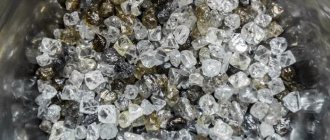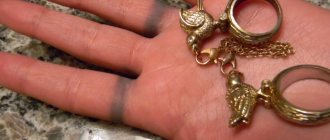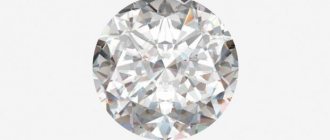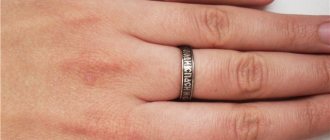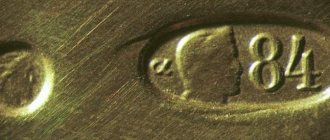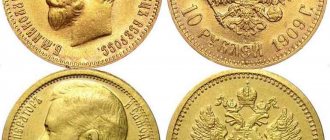Characteristics and properties of diamonds
Diamond is a crystalline form of carbon . It is the hardest of the precious minerals and is characterized by high thermal conductivity. The color of the crystal can be transparent white, yellow, pink, blue, green and brown. Diamond mining began 3000 years ago in India. As a gem used to make jewelry, crystal became famous in medieval France. Currently, the largest diamond exporters are Russia, India, Africa, Canada and Brazil.
A diamond is a cut diamond of a special shape that emphasizes the natural shine of the stone. The diamond reaches private buyers in this form.
Sell in good hands
The next stage is the sale of batches of diamonds directly to jewelry companies, which will set the stone in jewelry and sell it on the retail market. Brokers who have clients all over the world are responsible for this stage. This is the third stage of cost increase. Brokerage firms, like individual brokers, are typically located in large centers called exchanges. There are several such exchanges in the world, the largest are located in Israel and India. There is also a stock exchange in Antwerp, but in terms of size and supply it cannot be compared with the previous ones. As a rule, the exchange is a well-guarded perimeter closed to outsiders, where a complete infrastructure has been created for convenient work. Access here is only possible after a thorough security check. The largest transactions for the sale of large quantities of cut diamonds take place here. It is important to understand that all cutting production facilities are located outside the perimeter, and are often located hundreds of kilometers from the exchange. As an example in India, 95% of stones are cut in Surat, and the exchange itself is located in Mumbai.
From the exchange, the main flow of diamonds, as a rule, ends up in major jewelry centers, such as Hong Kong, Antwerp, New York and Dubai, where the offices of the largest jewelry chains and a huge number of private jewelers are located. The explanation for this is simple: each of these cities is a kind of gateway to one or another region of the world. At this stage, the largest increase in the price of a diamond occurs. If before this the diamond remained on the professional market, where everyone perfectly understands the value and the price increases due to real expenses plus the company’s small earnings, now the price of the stone very much depends on whose hands they fell into, and what the seller is ready to do in order to extract maximum profit. If it is a well-known brand that has large overhead costs, then the price of the stone can often increase three, four or five times. This is facilitated by competent marketers who, in order to increase the cost, create myths about the exclusivity of their jewelry, come up with non-existent parameters and properties of diamonds, new names for standard types of cuts, and many other tricks in order to highlight their product on the market.
Victor J. Blue/Bloomberg via Getty Images
You need to understand: it doesn’t matter who you purchased the diamond from - a private jeweler or a world-famous company. The source of origin of diamonds is the same for both. Only the characteristics specified in the certificate are significant. Deposits located on different continents are distinguished only by the number of high-quality diamonds in the rock, and, accordingly, the average cost of a carat for a particular pipe (Russia, by the way, is far from in first place in this indicator). But whether the stone was mined in Yakutia, South Africa or Australia, if the parameters are the same, does not matter.
Factors influencing the price of a diamond
The cost of a precious crystal is influenced by many factors. Firstly, the quality of the stone and its cut . If a diamond has cracks, it is not suitable for making jewelry. In this case, it is used as an industrial raw material for diamond chips. Industrial raw materials are 20 times cheaper than high-quality solid stones. A large number of smooth and well-processed edges makes the crystal more expensive.
The price of crystals also depends on their size. Stones up to 5 carats in size are valued at about 70,000 rubles for every 0.1 carat . Larger diamonds are very rare and therefore more expensive.
The purity of diamonds is another criterion for their selection, which also affects the cost of jewelry. Purity is determined by the number of inclusions and the transparency of the mineral, which allows you to see flaws in its structure, which are necessarily present in all stones of natural origin. The fewer foreign mixtures, the higher the degree of purity, and, accordingly, the more expensive the crystal.
To some extent, the price is also influenced by the place where the jewelry is mined. Crystals from India are more popular, and therefore their price is higher than that of diamonds extracted from mines in the USA and Russia, which are relatively new deposits.
The history of measuring the weight of minerals and precious metals and what is the cost of one carat
The first weighing methods appeared 4 thousand years ago. Ancient civilizations needed measurements to develop agriculture, trade, crafts and construction. Each ancient society had its own way of measuring weight until they arrived at a common system.
In ancient Rome, gems were weighed using coral tree seeds. One seed weighed as much as a small diamond. The weight of the coins was measured using acacia seeds.
It was from the name of this plant in Latin (Ceratonia siliqua) that the word “carat” appeared. In the modern world, it is equal to 200 mg, like one acacia seed.
In northern Europe, barley grains were used to measure minerals.
Carat does not have a single cost table : much depends on the chosen precious metal or stone, as well as on its quality and deposit. For example, the price of a gem such as a ruby for 1 carat in rubles is from 12,000 and above. But the price of sapphire for 1 carat starts from 17,000 rubles.
What were the carats?
For a long period of time, there was no unified weighing system for precious stones or metals in the world. Each part of the world had its own variations. In the Netherlands and England it differed by only a couple of milligrams, but in Italy it was already several tens of mg!
One reason for this variation was that small traders were inconvenient to purchase new weighing machines.
The policy of England also interfered, where everything was measured in pounds and ounces, while Europe weighed in kilograms and grams.
But the Committee of Measurements in France in 1907 recorded how much a carat weighs - 200 mg. This measure has been officially adopted throughout the world since the 20s of the 20th century.
What is carat
It is a measure of weight outside the metric system. Jewelers designate it as ct, and the carats of all jewelry stones are ct TW. They are considered together if they belong to the same type of gems. For example, the weight of rubies in earrings is indicated by one number, but if other stones are present, their weight will be indicated separately.
Difference between gold and diamond carats
Gold is the amount of gold in a precious metal without impurities. The measure depends on the sample, which expresses the percentage of pure metal in the alloy.
A jewelry carat is the weight of a whole crystal. Unlike gold, the quality of which depends on the purity, for semi-precious stones this is a separate value. Therefore, precious stones are evaluated according to several criteria: clarity, color, cut.
Why is this parameter important?
The weight of a precious metal plays a big role in its valuation. In nature, large stones are rare, so the greater the weight, the more expensive the product with the gem will cost. But this is only the first step in estimating the cost of stones.
Next come clarity, color and cut quality, so a 0.33 ct diamond may be more expensive than a 0.65 ct diamond if it has higher characteristics.
Attention! Stones with a large number of carats are very valuable and are sold at auction.
Types of diamonds and their costs
Types of precious minerals vary in shades . The color differences between stones are due to the presence of certain impurities or their absence. Diamonds that are expensive are those that do not contain a large amount of impurities and, for this reason, have transparency and a whitish tint. Of course, such diamonds also contain a certain percentage of inclusions, but it is very small.
The rarest red and green diamonds containing chromium are quite expensive. For one carat of such luxury you need to pay about 250,000 dollars . Rare purple stones with inclusions of hydrogen, pink crystals with an admixture of manganese, as well as blue ones, including a mixture of aluminum and boron, are expensive.
The cheapest minerals are brown ones containing iron, which gives them their color. The yellow ones are a little more expensive than the brown ones and have lithium inclusions.
Examples of calculating the cost of one carat diamonds
By combining different characteristics of a gemstone, you can roughly calculate its value. Thus, a one-carat round diamond, rated as absolutely colorless (color category 1(D)) and having the highest clarity 1(IF), costs approximately 2 million rubles . However, if you purchase exactly the same diamond of color category 4 (G), purchasing a crystal that is almost no different in appearance from the previous version will cost about 1 million rubles .
One carat of an oval-cut diamond with color 1(D) and clarity 1(IF) costs much less than a round crystal - about 1.5 million rubles . Cushion, princess, marquise, radiant and pear cut stones of the same quality have approximately the same price.
The cheapest options are champagne-colored minerals (6(I), 6.1 (J), 7(K)). One carat of such stones of any cut, except round, which is more expensive, costs from 400,000 to 550,000 rubles with a clarity of 1(IF). If such a diamond is of medium purity, then its price will be only 250,000 rubles .
Diamond grading: GIA system
In 1953, the Gemological Institute of America (GIA) developed one of the most accurate diamond grading systems. Most gemological laboratories in the world still rely on the GIA “4C” classification to determine the value of stones.
The system classifies diamonds into five grades of quality: poor, fair, good, very good and excellent. The quality of diamonds is determined by 4 key parameters: carat weight, color, clarity and cut.
Weight
The weight of the mined gemstone directly affects its value. The weight and size of diamonds are measured in carats: 1 carat (ct) is equivalent to 0.2 grams.
Depending on their weight, diamonds are divided into small (up to 0.29 carats), medium (0.3-0.69 carats) and large (over 0.7 carats).
Typically, large minerals have a higher value, but some small stones are more valuable - if they have unique quality characteristics.
Color
Completely colorless “white” stones are the most expensive, as they are extremely rare in nature. The explanation for this is simple: the more transparent the diamond, the more it sparkles and shines.
Colored diamonds are graded using different criteria. Especially for “colorful” finds, GIA has developed a scale on which gemologists around the world determine the saturation of a particular shade.
Colored diamonds can have a wide variety of color inclusions. The most common shades are yellowish and white. The least common stones are red, blue, green and purple.
There are also diamonds of the so-called fancy shade. These include stones that are not included in the GIA scale. They are separated “by determining the hue, saturation, tones from light to dark and the uniformity of color distribution of the diamond.
Purity
Cleanliness is the degree to which chips, cracks, air bubbles and other defects are present both outside and inside the stone. It is noteworthy that stones without internal defects are valued more than diamonds that are “clean” on the outside.
The rarest diamonds are those without any internal inclusions or with minor defects that are not detected by the GIA standard grading method using a 10x magnification loupe.

